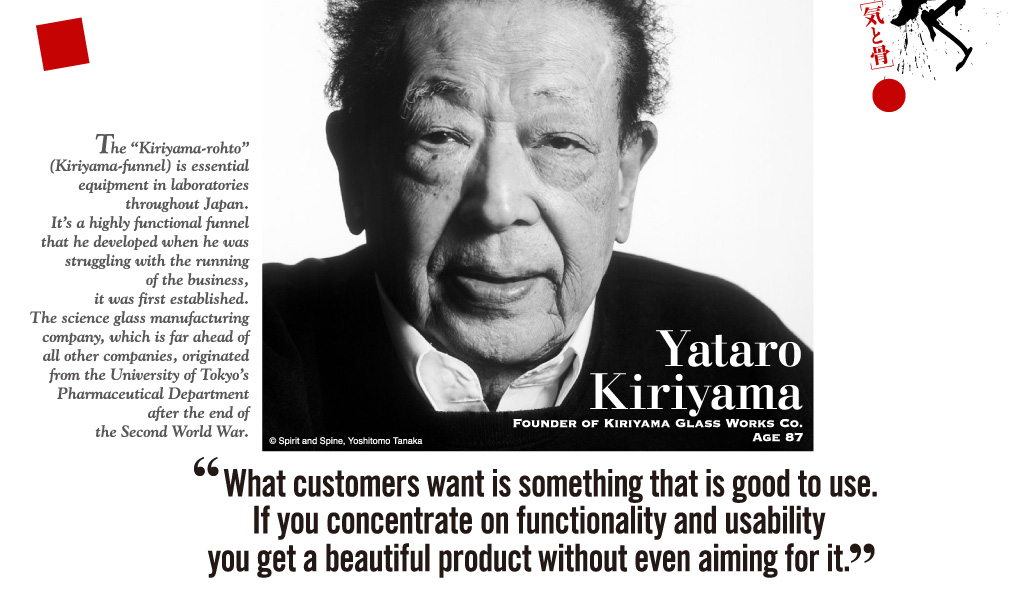After the war Tokyo was a burnt out city. One day he happened to wander into the campus of the University of Tokyo, which had escaped being destroyed by the fires, and through a window his gaze fell upon the laboratory equipment. A professor from the pharmaceutical department started talking to him and when he said he could make glasswork, he was hired on the spot.
He started working in the laboratory, making glass utensils in correspondence with the researchers’ requests. He responded immediately to the enthusiasm of the researchers who were passionate about the post war reconstruction, and although there were times when they would argue, he spent his days fervently exercising his ingenuity and practicing his craft. Being present on the laboratory floor enabled him to gain valuable experience of being able to ascertain for himself what was good or bad about the equipment. Many researchers came to rely on his skills, and when they moved to other universities or research institutes he began to receive more and more orders from them. As he couldn’t accept work at the university from outside, he founded his own independent workshop.
He invented the Kiriyama-rohto, which has many grooves, after being inspired by a manhole cover on a rainy day. It can quickly filter a large amount of liquid, it’s easy to operate, and above all else, it’s a beautiful shape. He has been constantly working away in his company’s laboratory on custom-made utensils or on developing new unique pieces of equipment.
This workshop in Arakawa City plays an important role in supporting cutting-edge research and development in Japan, by supplying equipment for basic and applied research, as well as for various other fields including the medical, food, chemical and manufacturing industries.







































































































